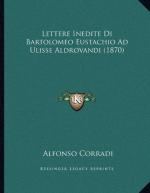|
This section contains 320 words (approx. 2 pages at 300 words per page) |
World of Anatomy and Physiology on Bartolomeo Eustachio
Bartolomeo Eustachio (known as Eustachius) wrote a remarkable series of scientific works on the following subjects: anatomy of the kidney, the hearing apparatus, the teeth, and the circulatory system, during 1562 and 1563. These works were organized and published as the Opuscula Anatomica in 1564.
Bartolomeo's father, Mariano Eustachius, was an affluent physician, in San Severino, Ancona, Italy, where Bartolomeo was born. Bartolomeo received a vast humanistic education, a requirement of the academic formation at that time, and studied Medicine at the Archiginnasio della Sapienza in Rome. He was also well versed in Hebrew, Arabic and Greek languages, which gave him access to the original medical treatises written in those languages. As a physician, Eustachius enjoyed great prestige among the upper classes, having among his patients the Duke of Urbino, the Cardinal della Rovero, the Duke of Terranova. He became a member of the Medical College of Rome and was appointed in 1549, Professor of Anatomy at the Papal College, the Archiginnasio della Sapienza. Eustachius' anatomical studies of the ear yielded an accurate description of the auditory tube, which to this day is known as the Eustachian canal.
Eustachius was deeply interested in understanding the anatomical structures of the human body through direct observation instead of accepting the many a priori theories current among other physicians. His anatomical investigations were not only vast but also remarkable, including the structure of the teeth, lower cava vein valve, known as Eustachian valve, which he described in detail, rightly concluding that its function was to avoid blood reflux. He also discovered the thoracic canal. Trying to understand how diseases affected body structures, Eustachius made comparative anatomical analysis between healthy and disease-altered organs (pathological anatomy). Working with Pier Matteo Pini, they produced a series of 47 detailed drawings of the studied organs. These series of illustrations, Tabulae Anatomicae Clariviri, were published only in 1714. Eustachius died in Umbria, in 1574, during a trip to meet the Cardinal della Rovere.
|
This section contains 320 words (approx. 2 pages at 300 words per page) |


